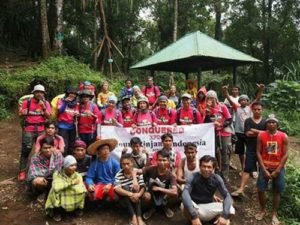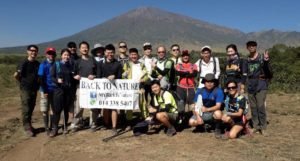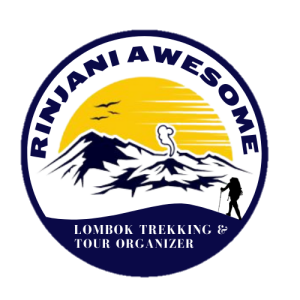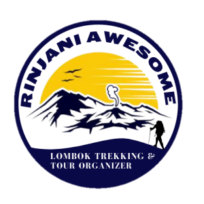Choose Sembalun or Senaru Ascent Route
Serious trekkers should explore the options of staying on the Rinjani mountain for 3 nights or more with a planned trek that takes in the crater rim, down to the lake shore, the absolute summit and more. Such treks normally start in either Senaru or Sembalun, but in the last couple of years some other routes have opened, including the Benang Stokel, Timbanuh, and Torean routes.
Senaru ascent route
 This is by far the most popular route, as it allows only a (relatively) less strenuous trek to the crater rim. You start at an elevation of 600 m in Senaru village, normally in the late morning or early afternoon, and make the 6-hour ascent to the crater rim before dark. The first part of the trek is through a tropical rainforest.
This is by far the most popular route, as it allows only a (relatively) less strenuous trek to the crater rim. You start at an elevation of 600 m in Senaru village, normally in the late morning or early afternoon, and make the 6-hour ascent to the crater rim before dark. The first part of the trek is through a tropical rainforest.
Look and listen out for the lutung, or black monkey, swinging through the trees in the late morning. They are extremely shy, unlike the common macaques, who may gather near rest stops waiting for scraps.
The route passes through POSII at 1,500 m, breaches the treeline at 2,000 m (POSIII), and then it is a bit of a slog up gravel paths to the camp site just below the crater rim at 2,600 m. There is no clear path near the crater rim in the final section, which has a 45-degree incline. There is a POS Extra after POS 3, but it is pretty much gone, and the remaining bits have been chopped up by porters as firewood.
If that has not sapped all of your energy, you can then make a very precarious descent down to the shores of the crater lake and bathe in the hot waters. You need some confidence to do this as it is a steep descent of 600+ m using handrails and ropes. And then it is back to Senaru the way you came. Local guides claim going down is faster, but speed varies for individuals. Patience is vital for first timers, as it can get frustrating watching porters sail past you with their load balanced on one shoulder, clad in slippers or even walking barefoot.
The descent from POS Extra to POS 3 can be slippery when the weather is dry, as scree tends to give way under your feet. From POS 3 to POS 2, the descent can take 1.5 to 2 hours, as the savannah grasslands fade away, and the humidity and heat from the tropical rainforest begin to set in. If you did not bring a trekking pole, request that your guides cut one out of wood for you.
It will be extremely handy during the descent, especially when your legs are aching from the strenuous climb. There is an option to go on to Plawangan II, where you overnight again before making the ascent to the absolute summit. This is not especially recommended from the Senaru side, though. If you want to get to the top, the climb to Plawangan II is best made from Sembalun.
Sembalun ascent route
 Starting in the morning from the Rinjani Trek Centre in the village, the climb to Plawangan II at 2,638 m will take about 8 hours via POSI (1,300 m), POSII (1,500 m) and POSIII (1,800 m). The starting altitude is 1100 m, so there are no humid conditions to deal with. The first half or more of the trek is literally a breeze.
Starting in the morning from the Rinjani Trek Centre in the village, the climb to Plawangan II at 2,638 m will take about 8 hours via POSI (1,300 m), POSII (1,500 m) and POSIII (1,800 m). The starting altitude is 1100 m, so there are no humid conditions to deal with. The first half or more of the trek is literally a breeze.
The trek through savannah grassland is windy and easygoing, with gentle ups and downs, and the only obstacles to look out for are the cow pats deposited by the villagers’ cows along the way. Rolling hills and amazing scenery help to ease the tiredness, unlike the enclosed tropical rainforest of the Senaru route.
From POS 2 to POS 3, the climb is still manageable. The challenge for the Sembalun route is from POS 3 to POS Extra, as the uphill gradient can be 50 degrees at times. Young children will find this section challenging as some steps are set quite far apart. Cooler weather up here may give the body the impression that it does not need fluids, but do drink more to prevent altitude sickness setting in.
Strangely, there is a guy selling cold drinks for those who crave them. Overnight at the campsite here and go for the summit starting at 3 AM the next day. You need to be well rested as this is a stiff task. The final climb is nearly 1,100 m on difficult ground.

